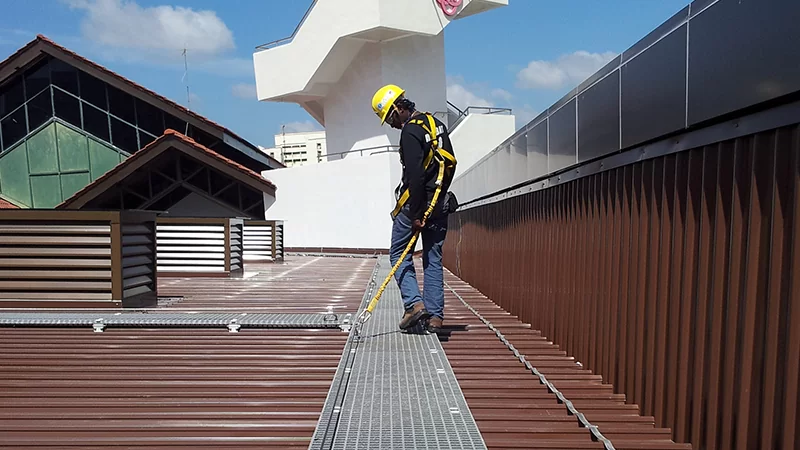Safety and Security Signaling is a critical component of any industrial, commercial, or large-scale facility. Proper signaling systems provide immediate alerts during emergencies, communicate vital information, and protect personnel, property, and operations. With advances in technology and compliance requirements, modern Safety and Security Signaling solutions now encompass a combination of visual and audible alarms, intercoms, telephony, and initiating devices that ensure every safety scenario is effectively addressed. Facilities that invest in robust signaling systems not only safeguard lives but also maintain operational continuity and regulatory compliance.
Understanding Safety and Security Signaling
Safety and Security Signaling refers to the integrated systems designed to notify personnel of emergencies, hazards, or critical operational changes. These systems can be visual, audible, or both, depending on the requirements of the facility. Visual signals, such as flashing lights and beacons, provide immediate alerts even in noisy or challenging environments. Audible signals, including bells, sirens, and voice modules, ensure that emergency information reaches every corner of the facility. Initiating devices, such as breakglass callpoints and push-button stations, activate alarms and emergency protocols, while intercoms and telephony systems enable real-time communication for effective coordination during incidents. Modern Safety and Security Signaling systems are designed to integrate seamlessly with existing infrastructure, providing comprehensive coverage and reliable performance.
Visual Signaling Solutions
Visual signaling plays a crucial role in alerting personnel to emergencies or operational alerts. Safety and Security Signaling systems use a variety of visual devices to ensure that every situation is immediately noticeable. Flashing lights, rotating lights, strobe lights, and steady lights serve as instant attention-grabbers in areas where auditory signals may be less effective. Panel mount signals and status indicator lights provide clear visual feedback on equipment conditions or operational status. Beacons are particularly effective for industrial environments, offering 360-degree visibility in large spaces. By incorporating visual signaling into your facility, Safety and Security Signaling systems improve situational awareness and enhance overall workplace safety.
Audible Signaling Solutions
Audible signals form another essential component of Safety and Security Signaling. Amplified speakers, bells, electronic sirens, horns, loudspeakers, sounders, tone modules, and voice guns ensure that alerts reach personnel even in high-noise environments. These systems are particularly valuable in factories, warehouses, and industrial facilities where immediate awareness of emergencies can save lives and prevent costly damages. Audible signals are designed to be distinguishable, ensuring personnel can differentiate between fire alarms, evacuation notices, and other critical notifications. A reliable audible signaling system reinforces the visual components of Safety and Security Signaling, creating a multi-layered alert system that maximizes safety and responsiveness.
Intercom and Telephony Systems
Intercom and telephony systems complement visual and audible alerts by providing real-time communication during emergencies. Safety and Security Signaling includes public address systems, general alarm digital systems, master stations, intercom stations, handsets, panel microphones, and speakers. These devices allow central control operators to broadcast emergency instructions, coordinate evacuations, and communicate with personnel across multiple facility zones. Industrial-grade telephony systems, such as Ex-Proof industrial telephones, extension bells, and extension horns, are essential for hazardous or explosion-prone areas. Integrating intercom and telephony systems with Safety and Security Signaling ensures fast, accurate, and clear communication, significantly improving incident response and coordination.
Initiating Devices
Initiating devices are key components of Safety and Security Signaling that enable personnel to activate alarms and emergency systems quickly. Breakglass callpoints, fire alarm pull stations, and push-button stations are designed for accessibility and ease of use, allowing anyone in the facility to trigger alerts in case of fire, chemical spill, or other emergencies. These devices are strategically placed throughout the facility to ensure they are reachable during critical moments. By incorporating initiating devices into Safety and Security Signaling, facilities provide personnel with the tools to respond immediately, reducing risks and improving overall safety outcomes.
Compliance and Quality Assurance
Safety and Security Signaling systems must comply with international standards to guarantee reliability, safety, and effectiveness. ATEX Production Quality Assurance ensures that equipment and protective systems meet Directive 2014/34/EU requirements, making them suitable for use in potentially explosive atmospheres. Compliance with Annex IV of the directive confirms the integrity of the production quality system. IECEx certification further guarantees that signaling and communication devices perform safely and reliably in hazardous environments. Choosing certified Safety and Security Signaling solutions protects facilities from regulatory penalties, enhances safety, and provides peace of mind to operators and personnel alike.
Choosing the Right Signaling System for Your Facility
Selecting the appropriate Safety and Security Signaling system depends on several factors, including facility type, operational environment, noise levels, and regulatory requirements. Industrial facilities may require a combination of high-intensity visual beacons and loud audible alarms, while office buildings may prioritize public address systems and status indicator lights. Integration with existing fire, security, and monitoring systems enhances effectiveness and ensures streamlined operations. Consulting with experienced Safety and Security Signaling providers can help facilities choose solutions that meet safety goals, improve response times, and comply with international standards.
Maintenance and Reliability of Signaling Systems
Reliable performance of Safety and Security Signaling depends on proper maintenance and regular testing. Facilities should conduct scheduled inspections, functional testing, and repairs to ensure that all devices operate correctly when needed. Regular maintenance prevents false alarms, equipment failure, and downtime, maintaining the integrity of safety systems. Personnel should be trained to recognize malfunctions, perform basic troubleshooting, and report issues promptly. Well-maintained Safety and Security Signaling systems enhance operational safety, reduce liability, and provide confidence that emergency protocols will be effective when required.
Takeaway
Safety and Security Signaling is an indispensable aspect of modern facilities, combining visual and audible alerts, intercoms, telephony, and initiating devices to provide comprehensive safety coverage. Certified systems, such as ATEX and IECEx compliant equipment, guarantee performance and reliability, even in hazardous environments. By implementing a robust Safety and Security Signaling strategy, facilities protect personnel, safeguard assets, and maintain operational continuity. Proactive selection, installation, and maintenance of signaling systems ensure that emergencies are managed efficiently and effectively, reinforcing a culture of safety and preparedness.
FAQ Section
What is the difference between visual and audible Safety and Security Signaling?
Visual signals use lights and beacons to alert personnel, while audible signals use sound such as bells, sirens, and voice modules. Both work together to ensure maximum awareness during emergencies.
How do ATEX and IECEx certifications impact signaling system safety?
ATEX and IECEx certifications confirm that signaling devices are safe and reliable for use in potentially explosive or hazardous environments, reducing operational risks and ensuring regulatory compliance.
Can Safety and Security Signaling systems be integrated with existing fire or security systems?
Yes, modern systems are designed for seamless integration with fire alarms, security systems, and building management platforms to provide centralized control and efficient emergency response.
How often should signaling devices be tested or maintained?
Regular inspections and functional testing should be conducted at least quarterly, with full maintenance performed annually or according to manufacturer guidelines to ensure consistent reliability.
Why is it important to choose certified Safety and Security Signaling solutions?
Certified systems guarantee compliance with international safety standards, provide reliable performance in emergencies, and minimize risks to personnel and facility operations.











